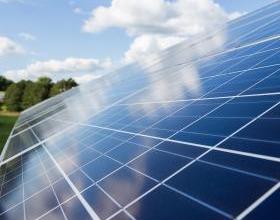In 2015 the United Nations Organization designs the 2030 Agenda consisting of 17 objectives to be achieved over 15 years. This Agenda proposed making significant progress from an environmental and socio-economic point of view, but above all it emphasized the environmental profile to be protected and improved through energy produced from renewable sources.
Renewable energy such as solar energy defends the environment because its use avoids the use of fossil fuels, one of the main factors in the emission of carbon dioxide into the earth's atmosphere, a cause of pollution, greenhouse effect and global warming. In addition to this, the green choice preserves the environment as it is not subject to exhaustion.
Recent research from the World Nuclear Industry Status Report has shown how convenient it is to produce with photovoltaics compared to other energy sources. in comparison, for each kWh, 16.3 dollars are spent on nuclear power / 11.2 dollars on coal / 5.9 on gas / 4 on wind power; just 3.7 dollars are enough to produce the same kilowatt hour with photovoltaics.
(source: Enrica Vigliano for digital.it)To spread and expand the benefits produced by energy from renewable sources, Energy Communities were born where not only the owners of the plants but also consumers who come together to produce green energy, share it and consume it can take advantage of the advantages.
The benefits of the Energy Communities
Born as a new model name for energy management widely used in Northern Europe, made possible thanks to the conversion into law of the Milleproroghe decree which regulated sharing and self-consumption in energy production where local authorities, companies and private citizens join together to produce energy renewable electricity, a way of collaborating also to reduce energy dependence on fossil sources. The benefits of an energy community, in fact, are economic, but above all environmental and social.
For consumers, who become producers, it allows the generation of energy for their own needs by putting into the grid the excess quantity available for other members of the community. Energy production is shared and networked by plants with a power not exceeding 200 Kw.
As an advantage, plants installed across energy communities can benefit from the 50% tax deduction.
If you want to receive more information you can contact our staff directly.





